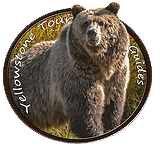A Guide to Canoeing and Kayaking in Yellowstone National Park
Yellowstone National Park is a land of sweeping plains, towering mountains, and, perhaps most importantly, majestic waterways. With more than 2,000 lakes and rivers, some of which are the purest in the world, canoeing and kayaking are wonderful ways to explore this iconic park.
From leisurely paddling on calm waters to the challenging rapids of the Yellowstone River, there’s something for all levels of canoeists and kayakers. Here are our Yellowstone tour guides’ tips to the best canoeing and kayaking opportunities in Yellowstone National Park.
Planning Your Trip
Before you gear up for your paddling adventure, it’s essential to plan your trip thoroughly. Here are some factors to keep in mind:
– Weather: Check the current and upcoming weather forecast, as it can have a significant impact on your safety and enjoyment.
– Regulations: Be aware of park regulations such as camping restrictions, permits, and boating rules.
– Equipment: Make sure you have the right gear, including life jackets, paddles, and a waterproof bag.
– Route: Choose a route that matches your skill level and time constraints.
Where to Paddle
Yellowstone National Park is open for canoeing and kayaking from late May to early September, depending on the weather. The waterways in Yellowstone vary from calm lakes to fast-moving rivers, so choose a route that matches your skill level and speed preference. Here are some of the best spots for canoeing and kayaking in Yellowstone National Park.
1. Lewis and Shoshone Lakes
Lewis and Shoshone Lakes lie in the southwestern part of the park and form a vast basin with a meandering channel system. These lakes offer beautiful scenery with stunning reflections of the mountains. Paddle along shorelines, through channels, and across open water to see moose, osprey, and other wildlife. Be aware that the wind can create choppy conditions on these lakes, so check the weather forecast before heading out.
2. Yellowstone Lake
Yellowstone Lake is the largest freshwater lake at high elevation in North America. The lake has many paddling routes and plenty to see, ranging from hot springs to geysers and wildlife. This is an excellent spot for an overnight trip, and backcountry campsites are available for reservation.
3. Gardner River
The Gardner River is a magnificent stream that winds through deep gorges with towering cliffs and cascading waterfalls. The river offers some of the best white water action in the park and is ideal for experienced kayakers.
4. Yellowstone River
The Yellowstone River is the longest undammed river in the lower 48 states and is a great spot for a multi-day float trip. The river is also famous for excellent fly fishing that brings in anglers from all over the world.
5. Lamar River
The Lamar River is one of the best gems for summer sightseeing in the park. Paddle along the Lamar Valley, which is known as the “Serengeti of North America,” and spot bison, elk, wolves, and other wildlife. Wildlife viewers must keep a safe and respectful distance from wildlife.
Tips for a Safe and Enjoyable Paddling Trip
Canoeing and kayaking in Yellowstone National Park can be a fantastic experience if you’re well-prepared and cautious. Here are some tips to ensure a safe and enjoyable trip:
– Never paddle alone: Always bring a paddling partner and make sure they have experience in paddling, backcountry camping, and wilderness first aid.
– Wear a life jacket: Always wear a properly-fitted life jacket when on the water.
– Be aware of weather conditions: Yellowstone’s weather can be unpredictable and change quickly. Be aware of wind, rain, and thunderstorm warnings.
– Keep your distance from wildlife: Wildlife, including bison and bears, can be dangerous. Give them plenty of space and observe from a safe distance.
– Plan your route: Make sure to plan your route in advance, including timelines, stopping points, and contingency plans in case of an emergency. Have detailed maps or a GPS device with you at all times.
– Be prepared for emergencies: Bring a first-aid kit, a whistle, a signal mirror, and additional food and water in case of emergencies or unexpected delays.
– Respect the environment: Paddle safely and keep the environment clean by packing out all garbage and disposing of everything correctly.
– Secure your gear: Keep your paddling gear in a waterproof bag or container, and always secure it to your boat.
Conclusion
Canoeing and kayaking in Yellowstone National Park are excellent ways to experience the park’s beauty and wildlife. It’s essential to plan your trip in advance, know your gear and skill level, follow the park’s regulations, and stay alert and cautious on the water. Remember wildlife are wild animals, and the natural environment is delicate, they should be respected. By keeping these tips in mind, you can have a safe, fun, and memorable paddling experience in Yellowstone National Park. Contact us to book your next adventure today!
